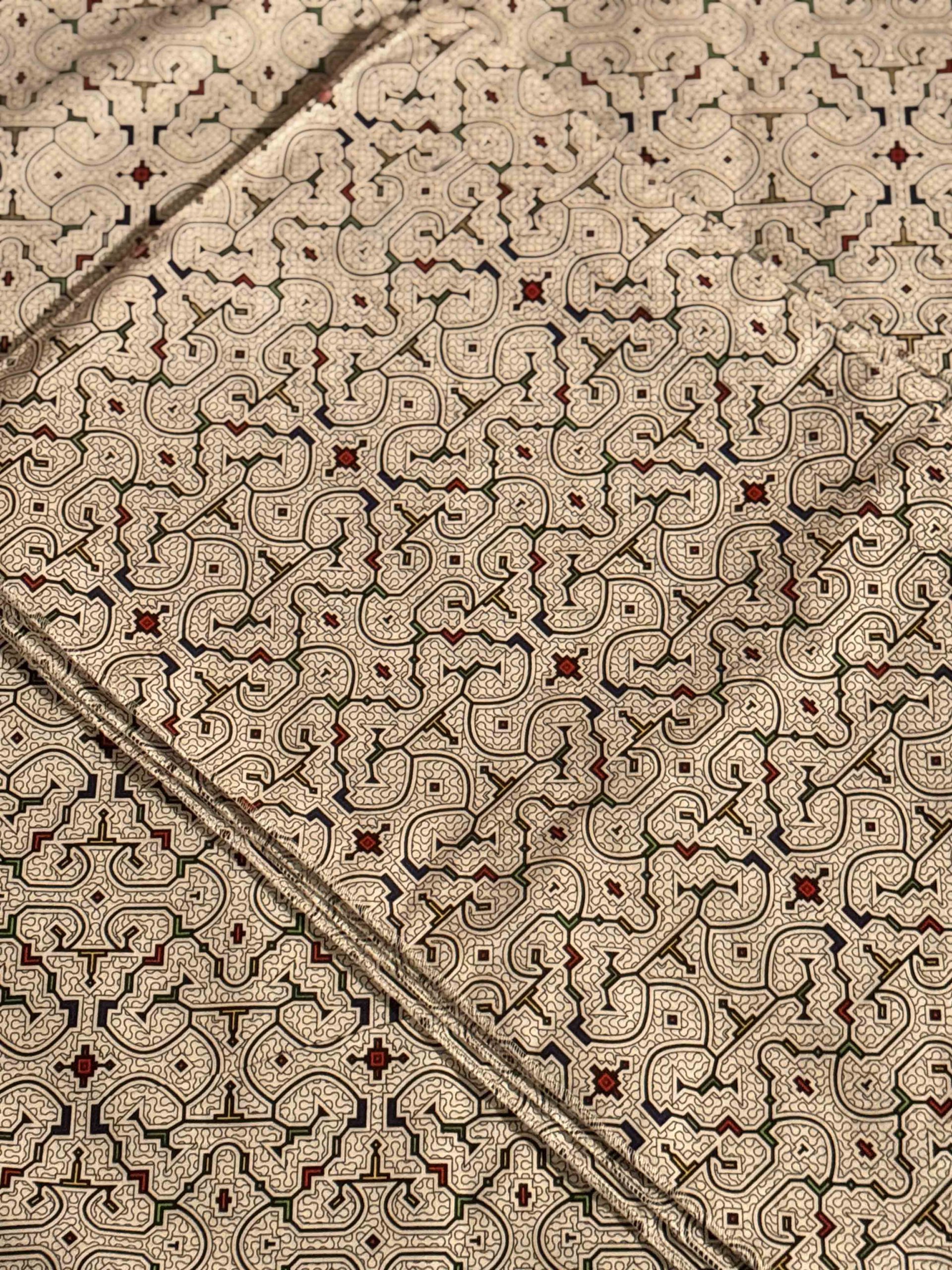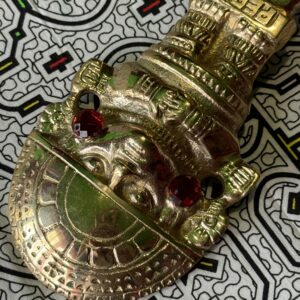These two images depict traditional Shipibo patterns on textile, ideal for use as ceremonial table mats or altar cloths. Here’s a detailed description and some cultural context for each one:
Description of the Textiles:
Black Shipibo Fabric (35×62 cm and 75×62 cm)
- Dimensions: Available in both small (35×62 cm) and large (75×62 cm) sizes, these fabrics are intricately designed with the classic Shipibo pattern, often used as ceremonial tablecloths during traditional rites and rituals.
- Pattern Description: The black pattern on the fabric features repeating geometric shapes, interconnected spirals, and intricate linework that resemble the spiritual energy of nature. The design is deeply symbolic and reflects the Shipibo people’s belief in the interconnectedness of the natural and spiritual worlds. These repeating motifs are said to represent the “energetic vibrations” of the universe, and the geometric patterns are often considered a way to connect with the spirit world during ceremonial acts.
White Shipibo Fabric (35×62 cm and 75×62 cm)
-
-
- Dimensions: Available in both small (35×62 cm) and large (75×62 cm) sizes, this fabric displays a more vibrant pattern with red, green, and blue highlights on a white base. This variation is commonly used for ceremonies invoking healing or spiritual cleansing.
- Pattern Description: The white fabric features a similar interconnected geometric motif but incorporates colored accents, which are thought to enhance the spiritual energy or ritual significance of the ceremony. The vibrant colors represent the harmonious balance between spiritual and physical worlds. The red, green, and blue hues symbolize life, healing, and energy in Shipibo traditions. Just like the black version, the patterns are inspired by visions, often obtained through plant medicine, and are used to connect the physical world with the spiritual dimensions.
-
Legend of Shipibo Patterns:
Shipibo patterns are famously derived from visions experienced during sacred ceremonies, particularly when participants consume ayahuasca. These visions reveal spiritual and energetic patterns that are then transcribed onto textiles, pottery, and other forms of art. The repeating motifs are meant to represent the “invisible patterns” of nature and life energy, often seen as a map to navigate spiritual realms. The Shipibo people believe that these patterns can facilitate communication with spirits, the forces of nature, and ancestors.
There is a beautiful Shipibo legend that speaks of the origin of these intricate patterns. According to this legend, in the beginning, a great black cosmic serpent, known as **Ronin**, journeyed through the vastness of the universe. This snake was ancient, powerful, and wise, gliding silently through the stars and cosmic rivers. As it moved, it began to sing a sacred song, known as an **icaro**—a melody filled with the secrets of creation, healing, and life itself.
The icaro was not just a song but a profound vibration, resonating throughout the cosmos. As the serpent sang, the patterns emerged on its back, growing and changing in harmony with the melody. Each curve, line, and shape represented a note, a frequency, a piece of ancient wisdom. The patterns embodied the very structure of the universe, a cosmic map that held knowledge of plants, animals, spirits, and the connection between all beings.
When the serpent finally came to Earth, it shared these sacred patterns with the Shipibo people, passing down the wisdom of the icaro and the designs that carry its energy. Today, these patterns are woven into textiles, painted on ceramics, and used in ceremonies. They are seen as sacred guides, helping shamans and seekers to connect with the cosmic energy of the serpent, bringing healing, protection, and a profound understanding of the universe’s mysteries.
Through these patterns, the Shipibo people honor the great black serpent and the cosmic song that continues to echo in their ceremonies, forever linking them to the universe’s rhythm and the ancient wisdom of Ronin.
Cultural and Symbolic Significance:
The Shipibo patterns are deeply spiritual and symbolic in Peruvian Amazonian culture, especially among the Shipibo-Conibo people. These designs, known as kene, are considered visual representations of songs, visions, and spiritual journeys experienced by shamans during ayahuasca ceremonies. Each pattern holds unique spiritual significance, often intended to protect, heal, and connect with higher consciousness.
The interconnected lines represent the web of life and the interconnectedness of all beings and elements in the universe. These patterns are believed to embody the energetic frequencies and vibrations of the Amazon, and placing them on ceremonial tables is thought to ground and protect the space, fostering a connection with the spirits and the wisdom of the Amazon.





Reviews
There are no reviews yet.